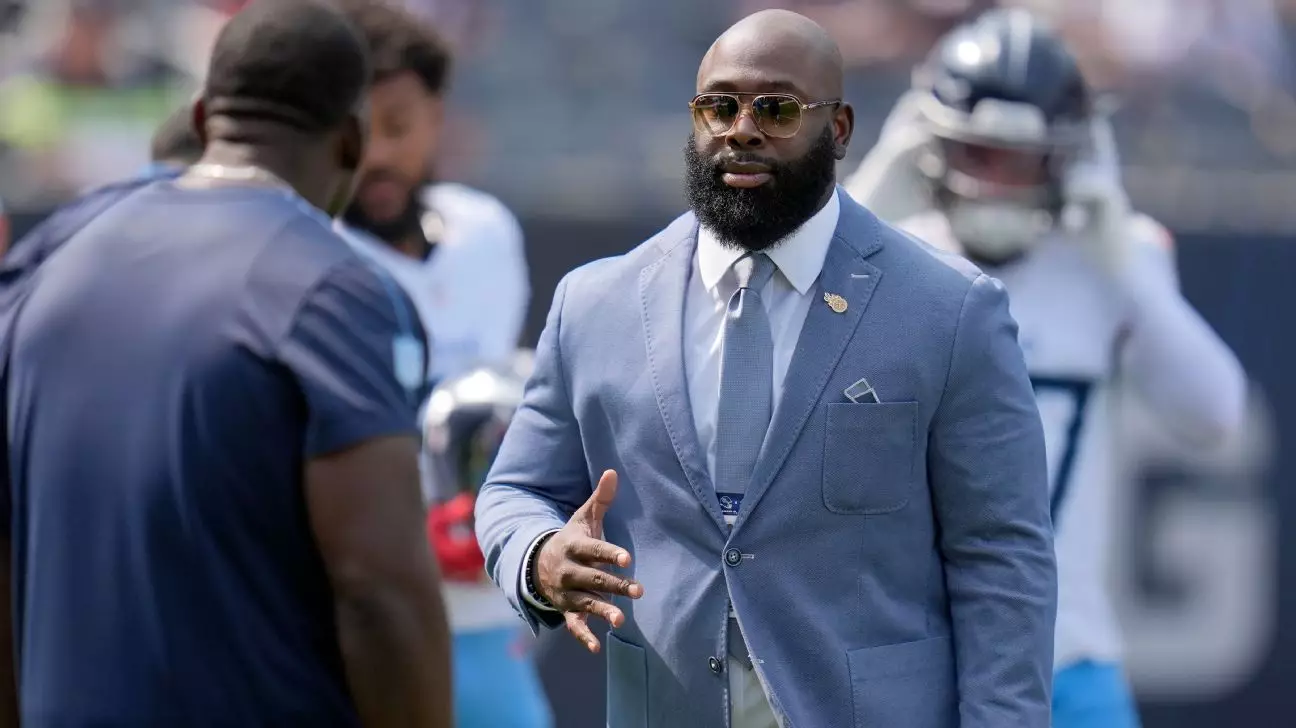On a day marked by significant organizational change, the Tennessee Titans have taken bold steps to rectify their lackluster performance by firing general manager Ran Carthon after a dismal 3-14 season. This decision resonates with the frustrations felt by both the franchise’s management and its loyal fan base, who have witnessed the team’s troubling decline over recent years. The Titans’ controlling owner, Amy Adams Strunk, made it clear that the stagnation in performance was unacceptable. Her statement articulates the disappointment surrounding the organization, emphasizing a need for an immediate turnaround that will reinvigorate the team’s prospects.
Carthon’s departure signals more than just a dismissal; it represents a moment of reckoning for a franchise that has struggled to find its footing. As the Titans prepare for the 2025 draft with the first overall pick, there is an urgent call to identify a more effective leader—a general manager capable of steering the team away from mediocrity and into the realm of competitiveness.
In the aftermath of Carthon’s firing, the Titans have announced that head coach Brian Callahan will remain in his position. This is a crucial point of continuity, given that the team seeks to foster a collaborative environment where the new general manager can work closely alongside Callahan. Chad Brinker, who serves as president of football operations, will lead the search for Carthon’s successor, making it clear that the new GM will be expected to possess a deep understanding of talent evaluation and college player projections.
Brinker’s emphasis on finding a candidate with a proven background in scouting indicates a strategic pivot towards a more analytical and nuanced approach to roster construction. It is apparent that the next GM should not only bring experience from a successful organization but also share a vision that aligns with both the coaching staff and the franchise’s long-term goals. Strunk and Brinker’s commitment to “absolute clarity” within the organization’s hierarchy speaks volumes about their intentions to streamline decision-making and enhance execution on the football field.
The decision to dismiss Carthon may also reflect a misalignment in expectations set when he was hired. Inheriting a team mid-crisis after the midseason firing of Jon Robinson, Carthon was thrust into a complicated situation without a clear mandate. Building upon the remnants of a team that lost seven consecutive games and fell short of playoff contention was always going to be a tall order.
Carthon’s promotion to executive vice president, alongside his GM duties, aimed at consolidating power, yet the results failed to materialize. Instead, the Titans experienced a troubling decline with a disastrous 6-11 record in his first year, followed by the alarming 3-14 season that ultimately sealed his fate. This swift decline has ignited discussions about the efficacy of leadership transitions and the impact of executive decision-making on team performance.
As the Titans enter a new chapter, with the potential acquisition of notable collegiate talent—such as Deion Sanders’ son, Shedeur Sanders, who has attracted attention as a prospective first overall pick—the urgency to transition from a disappointing season to a promising future cannot be overstated. The opportunity to revamp the roster through strategic drafting could serve as a critical turning point for the organization.
The Titans stand at a crossroads where the decisions made in the coming months will define their trajectory. Identifying a general manager who can not only scout and select talent effectively but also cultivate a synergistic relationship with the coaching staff will be essential. In a league characterized by competitiveness and constant evolution, the Titans must prioritize a holistic strategy that embraces innovation while remaining grounded in traditional scouting principles.
The Tennessee Titans are not merely reshuffling their executive ranks; they are engaged in a vital transformation of their operational philosophy. Strunk and Brinker have set an ambitious tone for the future, but it will require careful execution and a shared vision to ensure that the franchise not only regains its competitive edge but also embraces the aspirations of its passionate fan base.



Leave a Reply